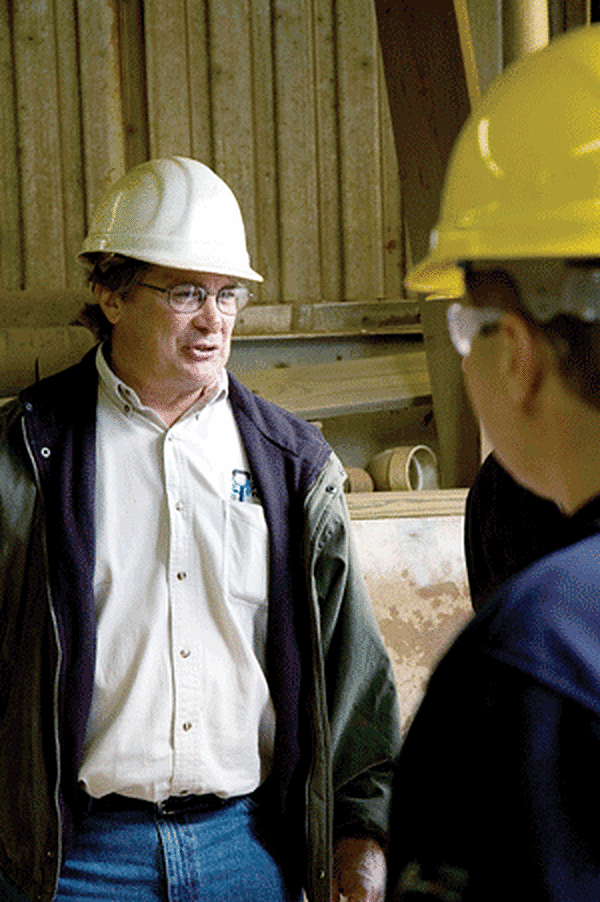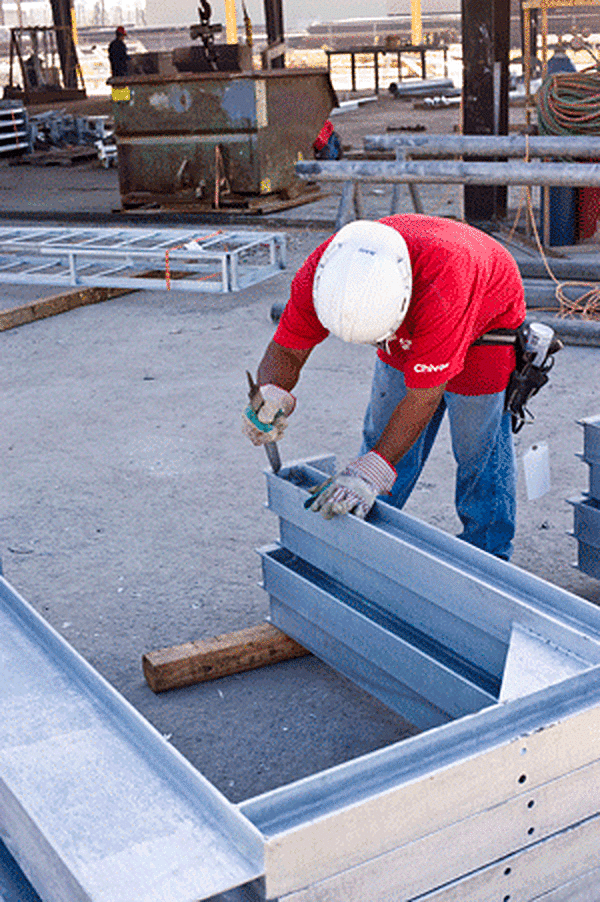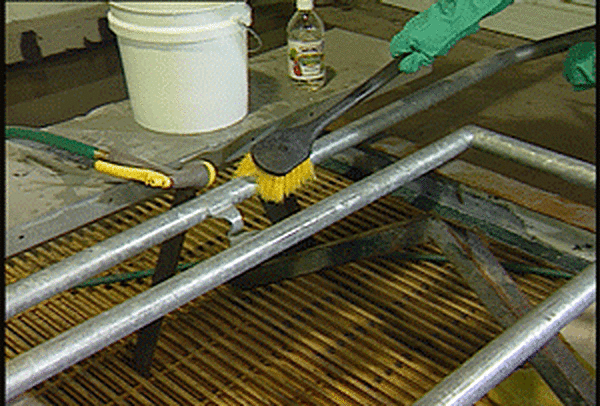Painting over Galvanizing
We have seen an increase in projects specifying paint over hot-dip galvanized steel. What is the reason for this increase and what special procedures do we need to follow to ensure the paint adheres to the galvanized surface?

Painting galvanized steel requires careful preparation and a good understanding of both painting and galvanizing. Many products have been galvanized and painted successfully for decades, including automobiles and utility towers. Past experience provides excellent historical data for how best to achieve good adhesion. By studying past adhesion failures and successes, galvanizers, paint companies, researchers, paint contractors, and other sources have created an ASTM specification detailing the process and procedures for preparing hot-dip galvanized steel for painting. When the galvanized surface is prepared correctly, paint adhesion is excellent and the duplex system becomes an even more successful method of corrosion protection.
Duplex Systems: Painting OverHot Dip Galvanized Steel is a publication written by AGA, detailing why and how duplex systems give optimal corrosion protection. The following excerpts should help galvanizers ensure quality surface preparation for paint over hot-dip galvanized steel.
Why Use a Duplex System?
There is a wide array of reasons for using a duplex system, ranging from financial benefits to safety. Each individual project raises unique reasons why a duplex system should be utilized. The following is a list of some of the most common reasons duplex systems are specified:
- Extended Corrosion Resistance
- Synergistic Effect
- Economical Benefits
- Ease of Repainting
- Aesthetics
- Safety Marking
- Color Coding
- Extend Life of Previously Galvanized Steel
- Repair of Hot-Dip Galvanized Steel
How to Prepare Hot Dip Galvanized Steel for Painting
Surface Characteristics of Galvanized Steel
Depending on the steel chemistry, galvanizing bath chemistry and the age of the galvanized coating, each galvanized steel piece may be very different from the next. Variations in coating appearance do not affect the corrosion resistance of the product.

Aging Characteristics of Galvanized Coatings
Galvanized steel can be divided into three categories: newly galvanized steel, partially weathered galvanized steel and fully weathered galvanized steel. Each type of galvanized steel must be prepared slightly different because the galvanized surface has different characteristics at each stage of weathering. It is important to know the age of the galvanized steel that will be painted as the age dictates how much cleaning and profiling needs to be done.
Surface Preparation
Surface preparation is a critical factor in achieving good paint adhesion. The two keys to surface preparation are cleaning and profiling the steel. If these two things are done correctly, a compatible paint system should have no problem adhering to the galvanized surface.

Cleaning
When cleaning a galvanized surface prior to painting, the goal is to remove any dirt, grease or oils. At the same time, care must be taken not to remove too much of the galvanized coating. Highly acidic or basic cleaning solutions remove some of the zinc coating, as does high-pressure sweep blasting. The more zinc that is removed from the surface, the less corrosion protection provided. Alkaline cleaning, ammonia cleaning, and solvent cleaning are the most common ways of removing dirt from a galvanized surface. As some cleaners may react differently with different paint systems, the paint manufacturer should be consulted for specific cleaning instructions.
Profiling
In order to provide a good adhesion profile for the paint, the galvanized surface must be flat with no protrusions and slightly roughened to provide an anchor profile for the paint system. Filing high spots, sweep blasting, phosphating, and using wash primers or acrylic passivations are the most common methods of increasing the profile of a galvanized surface. Again, care must be taken not to damage the galvanized coating.
Successful duplex systems stem from good communication with the galvanizer and paint manufacturer, as well as appropriate surface preparation and paint selection. These factors critically contribute to the creation of a long-lasting, effective duplex system. In addition to Duplex Systems: Painting Over Hot Dip Galvanized Steel, a new instructional DVD entitled Preparing Hot Dip Galvanized Steel for Paint is now available from the AGA. The guide details, step-by-step, procedures to be followed for ensuring a quality duplex system.
© 2024 American Galvanizers Association. The material provided herein has been developed to provide accurate and authoritative information about after-fabrication hot-dip galvanized steel. This material provides general information only and is not intended as a substitute for competent professional examination and verification as to suitability and applicability. The information provided herein is not intended as a representation or warranty on the part of the AGA. Anyone making use of this information assumes all liability arising from such use.

